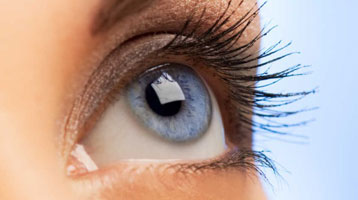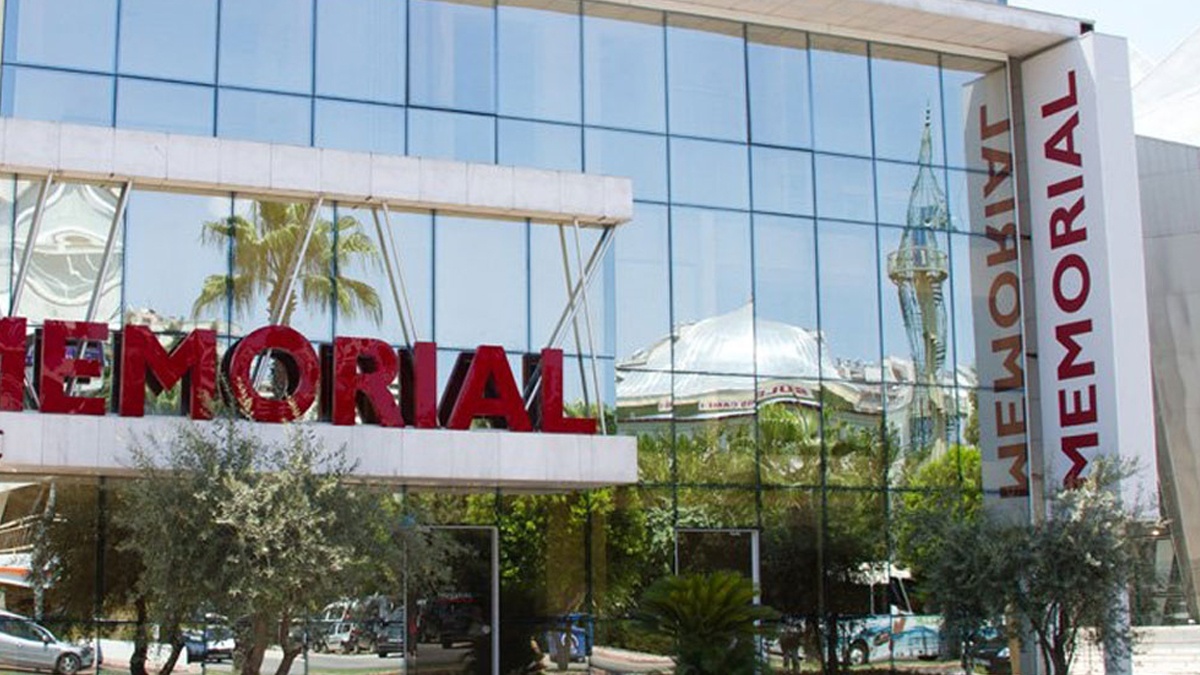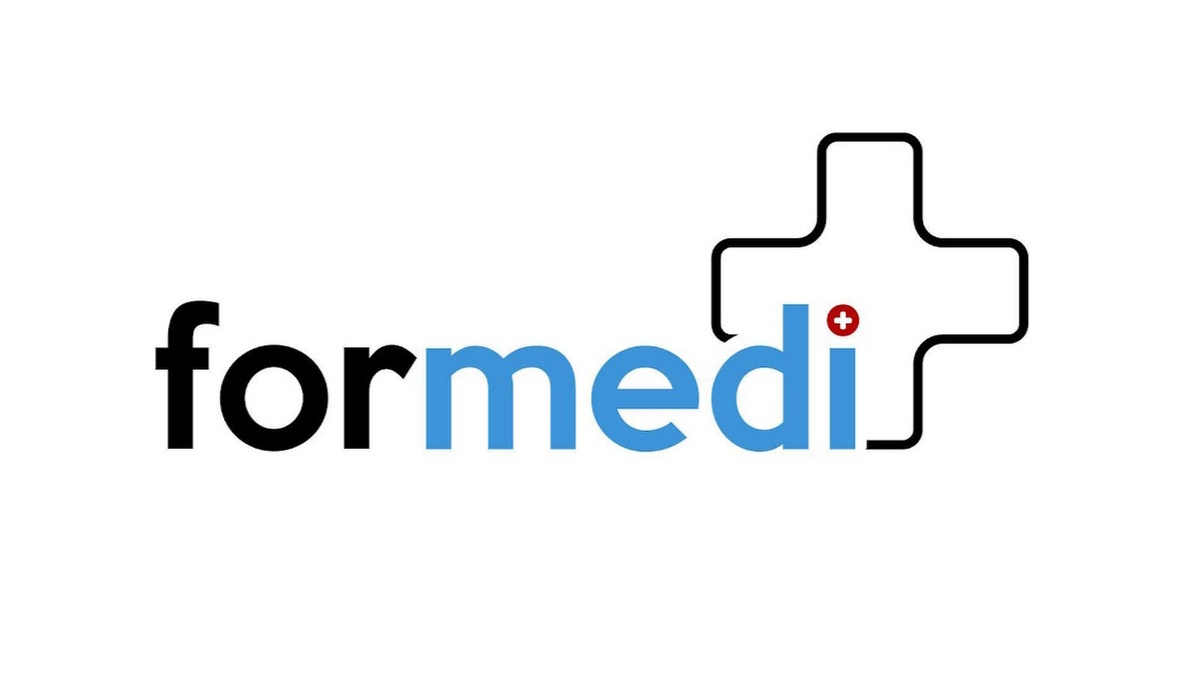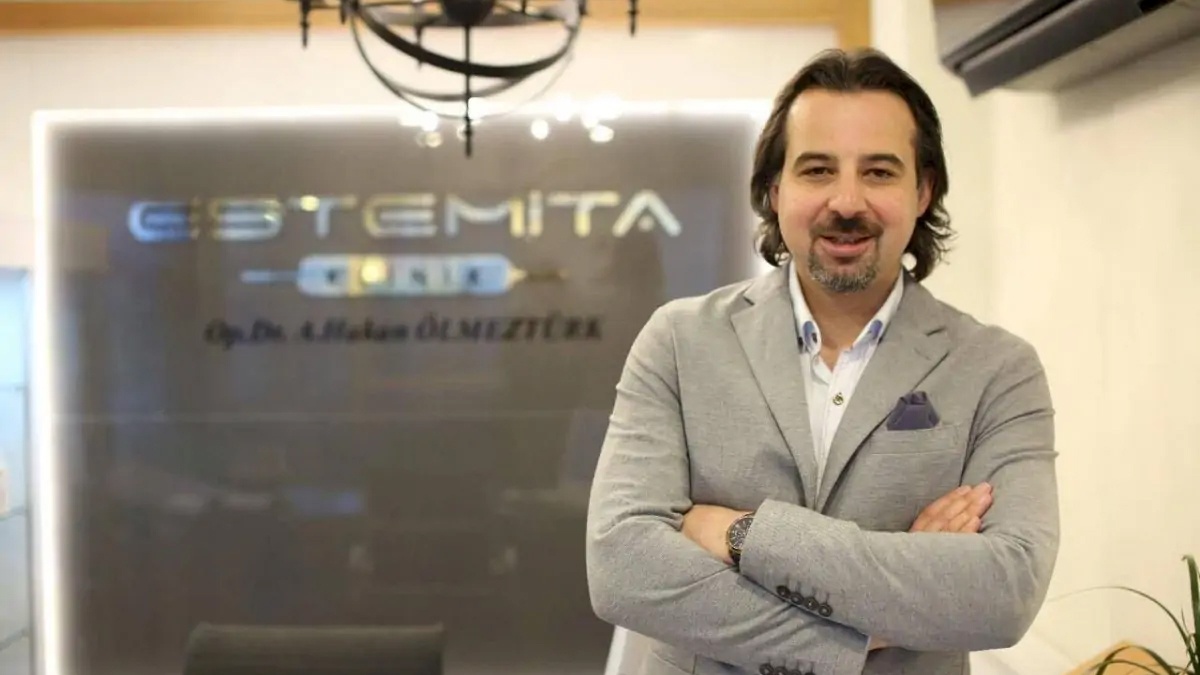Antalya, a jewel on Turkey’s Mediterranean coast, is not only renowned for its stunning beaches, rich history, and vibrant culture but has also emerged as a hotspot for cosmetic surgery.
With its advanced healthcare facilities, experienced surgeons, and competitive pricing, many people worldwide are flocking to Antalya to enhance their appearance.
However, before embarking on this transformative journey, it’s crucial to understand the costs involved in cosmetic procedures.
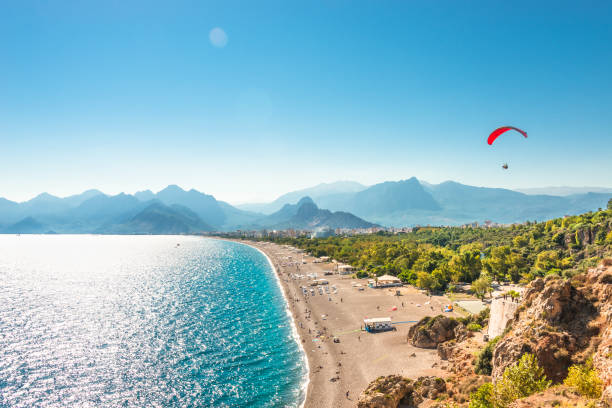
Why choose Antalya to have a cosmetic surgery?
Affordability and Cost Savings
One of the most significant factors attracting patients to Antalya is the cost of cosmetic procedures. Turkey, and Antalya specifically, is known for offering high-quality medical services at a fraction of the cost compared to Western countries.
- Price Comparisons: To illustrate, a rhinoplasty in the United States may cost between $10,000 and $15,000, while the same procedure in Antalya can range from $2,500 to $4,000. This price difference can significantly impact a patient’s decision-making process.
- Comprehensive Packages: Many clinics offer all-inclusive packages that cover not just the surgery but also accommodations, airport transfers, and follow-up care. These packages can often save patients money, as booking services individually can be more expensive.
- Transparent Pricing: Antalya clinics often provide detailed pricing information upfront, ensuring there are no hidden fees or surprises. This transparency helps patients plan their budgets effectively and reduces financial stress.
High-Quality Medical Facilities
Antalya is home to several state-of-the-art medical facilities that adhere to international standards of care.
- Accreditation: Many clinics are accredited by the Turkish Ministry of Health and international organizations, ensuring they meet strict safety and quality protocols.
- Advanced Technology: The city’s healthcare facilities are equipped with the latest medical technology. From minimally invasive surgical tools to advanced imaging equipment, patients can expect cutting-edge care tailored to their needs.
- Clean and Safe Environments: Clinics maintain high standards of cleanliness and safety, providing patients with a sterile environment for their procedures, which is critical for successful outcomes.
Experienced and Qualified Surgeons
Antalya boasts a pool of highly qualified and experienced plastic surgeons who have undergone extensive training both domestically and internationally.
- Board-Certified Surgeons: Patients can find board-certified surgeons with a wealth of experience in their specific procedures. Many have trained in Europe or North America, ensuring they are well-versed in the latest techniques and trends.
- Specialization: Surgeons often specialize in specific types of cosmetic procedures, such as breast augmentation, liposuction, or facial surgeries. This specialization ensures that patients receive care from experts who have honed their skills in their chosen field.
- Patient Reviews and Testimonials: Many clinics provide access to patient testimonials and before-and-after photos, allowing prospective patients to gauge the quality of care and results they can expect.
Comprehensive Services and Packages
Antalya clinics often provide a wide array of services that cater to various cosmetic needs, allowing patients to receive everything they need under one roof.
- Inclusive Packages: Many clinics offer all-inclusive packages that cover pre-operative consultations, the surgery itself, and post-operative care. This ensures a seamless experience for patients traveling from abroad.
- Tailored Services: Patients can customize their treatment packages based on individual needs and preferences. This level of personalization enhances patient satisfaction and leads to better outcomes.
- Additional Services: Many clinics also offer complementary services such as nutritional counseling, wellness therapies, and psychological support, addressing all aspects of a patient’s health and wellness.
Post-Operative Care and Support
Post-operative care is crucial for recovery and achieving desired results. Antalya clinics often excel in providing this essential support.
- Follow-Up Appointments: Comprehensive packages usually include follow-up consultations to monitor recovery and ensure everything is healing as expected.
- Accessibility to Medical Staff: Many clinics provide 24/7 support for patients, allowing them to reach out with any concerns or complications that may arise during their recovery.
- Patient-Centric Approach: Clinics emphasize a patient-centric approach, ensuring that each individual feels cared for and supported throughout their journey.
Beautiful Environment for Recovery
Antalya’s natural beauty and serene environment make it an ideal place for recovery after surgery.
- Stunning Scenery: The breathtaking coastline, picturesque beaches, and lush mountains create a calming atmosphere that is conducive to healing.
- Relaxation Opportunities: Patients can indulge in leisurely activities like beach walks, spa treatments, and nature hikes, which can positively impact their overall well-being during recovery.
- Mental Health Benefits: The beautiful surroundings can enhance a patient’s mood and provide a mental boost, helping them cope better with the stress of surgery and recovery.
Tourism and Cultural Experience
Many patients choose to combine their cosmetic surgery with a vacation, and Antalya is the perfect destination for this.
- Rich Historical Sites: The city is steeped in history, with numerous ancient ruins, castles, and museums. Patients can explore sites such as the ancient city of Perge, the Roman theater in Aspendos, and Hadrian’s Gate.
- Vibrant Local Culture: Antalya’s lively bazaars, local cuisine, and friendly atmosphere provide a wonderful cultural experience for visitors. Exploring local markets and trying traditional Turkish dishes can be a delightful addition to the journey.
- Access to Nature: The stunning natural parks and beaches provide plenty of opportunities for exploration and relaxation, making the healing process enjoyable.
Multilingual Staff
Language can be a barrier for many international patients, but Antalya clinics often employ multilingual staff to facilitate communication.
- Language Accessibility: Many clinics have English-speaking staff members who can assist patients throughout the process, from initial consultations to post-operative care.
- Cultural Sensitivity: Multilingual staff can provide a more personalized experience, catering to the cultural and personal needs of each patient.
- Patient Education: Clear communication helps patients better understand their procedures, expectations, and recovery processes, contributing to a more positive experience.
Flexible Scheduling
Antalya clinics often offer flexible scheduling options that cater to the varying timelines and preferences of international patients.
- Quick Consultations: Many clinics can arrange consultations and procedures quickly, accommodating the schedules of busy patients.
- Short Wait Times: Compared to many Western countries, patients often experience shorter wait times for both consultations and surgeries, allowing for timely treatment.
- Post-Surgery Plans: Clinics can work with patients to create personalized post-surgery plans that fit their travel itinerary, ensuring a smooth experience.
Safe and Regulated Environment
Turkey has strict regulations and standards for healthcare services, ensuring that cosmetic procedures are conducted in a safe and regulated environment.
- Regulatory Oversight: The Turkish Ministry of Health oversees medical facilities, ensuring they meet established standards for patient care and safety.
- Accident Prevention Protocols: Clinics adhere to protocols designed to minimize risks associated with surgical procedures, including infection control and emergency response plans.
- Informed Consent Practices: Clinics emphasize the importance of informed consent, ensuring that patients are fully aware of the risks and benefits associated with their chosen procedures.
Availability of Non-Surgical Options
In addition to surgical procedures, Antalya clinics often provide a wide range of non-surgical treatments, allowing patients to explore various options for enhancing their appearance.
- Variety of Treatments: From Botox and dermal fillers to laser treatments and chemical peels, clinics offer a comprehensive suite of non-invasive options for cosmetic enhancement.
- Combination Treatments: Many patients choose to undergo a combination of surgical and non-surgical procedures for a more comprehensive approach to their aesthetic goals.
- Tailored Plans: Surgeons and practitioners can work together to create customized treatment plans that incorporate both surgical and non-surgical options, maximizing results.
Networking with Other Patients
Traveling to Antalya for cosmetic surgery often provides opportunities to meet and connect with other patients undergoing similar procedures.
- Support Groups: Many clinics facilitate patient support groups, allowing individuals to share their experiences and support one another during their recovery.
- Social Connections: Meeting other patients can help build a sense of community, reducing feelings of isolation during the recovery process.
- Informal Meetups: Patients can organize informal meetups to share tips and experiences, enhancing their recovery journey.
Wellness Tourism
Antalya is not only a hub for cosmetic surgery but also a center for wellness tourism, with many clinics incorporating holistic approaches into their services.
- Holistic Treatments: Many clinics offer complementary therapies, such as acupuncture, aromatherapy, and massage therapy, designed to promote relaxation and healing.
- Wellness Packages: Some clinics provide wellness packages that include stress management workshops, nutrition counseling, and fitness programs, ensuring a well-rounded approach to patient care.
- Mindfulness and Relaxation: Incorporating wellness practices can help patients manage anxiety and stress related to surgery, contributing to a more positive experience overall.
Rich Culinary Experience
Antalya’s culinary scene is diverse and flavorful, providing patients with ample opportunities to explore local cuisine during their stay.
- Healthy Eating Options: Many restaurants in Antalya focus on fresh, locally sourced ingredients, making it easy for patients to maintain a healthy diet during recovery.
- Culinary Adventures: Patients can enjoy traditional Turkish dishes, such as mezes, kebabs, and baklava, as well as international cuisines that reflect the city’s multicultural influence.
- Dining Experiences: Many restaurants offer stunning views of the Mediterranean Sea, making dining a pleasurable experience while recovering.
Proximity to the Mediterranean
Antalya’s location along the Mediterranean coast not only enhances its beauty but also provides a therapeutic environment for recovery.
- Beach Therapy: The tranquil beaches offer a perfect setting for relaxation, allowing patients to unwind in a peaceful atmosphere post-surgery.
- Outdoor Activities: Patients can engage in gentle outdoor activities, such as walking along the beach or exploring coastal parks, promoting physical health and mental well-being during recovery.
- Natural Beauty: The breathtaking views and serene ambiance of the Mediterranean create a calming backdrop for the recovery journey.
The Factors that influence the price having a cosmetic surgery in Antalya.
Type of Procedure
The type of cosmetic procedure being performed is one of the most significant determinants of cost. Each procedure has its own complexity, time requirements, and materials needed.
- Surgical Procedures: These include major surgeries like rhinoplasty (nose reshaping), breast augmentation, liposuction, tummy tucks, and facelifts. These procedures often require extensive planning, specialized skills, and longer recovery times, leading to higher costs. For instance, breast augmentation can range from $3,000 to $7,000, depending on the implant type and surgical technique.
- Minimally Invasive Procedures: Treatments such as Botox, dermal fillers, and chemical peels generally have lower costs but can vary based on the amount used and the provider’s expertise. For example, Botox may cost around $200 to $800 per session, depending on the area treated and the amount of product injected.
- Combination Procedures: Many patients opt for multiple procedures during a single surgery to maximize their time and investment. For instance, a mommy makeover, which combines breast surgery and tummy tuck, may cost upwards of $10,000, reflecting the cumulative pricing of each procedure.
Surgeon’s Experience and Qualifications
The experience and qualifications of the surgeon performing the procedure can significantly affect the price.
- Board Certification: Surgeons who are board-certified in plastic or cosmetic surgery typically charge more than non-certified practitioners. This certification indicates that the surgeon has undergone rigorous training and adheres to high standards of practice.
- Reputation and Track Record: Surgeons with a proven track record of successful surgeries and satisfied patients often command higher fees. These surgeons may also be more sought after, leading to increased demand and higher prices. A well-respected surgeon may charge between $5,000 to $15,000 for a procedure based on their expertise and outcomes.
- Continuing Education: Surgeons who invest in ongoing education and training in the latest techniques and technologies may also charge higher fees, reflecting their commitment to providing the best care possible.
Clinic Reputation and Accreditation
The reputation of the clinic where the surgery will be performed can significantly impact costs.
- Accreditation: Clinics accredited by international organizations or the Turkish Ministry of Health often have higher operational costs due to the standards they must meet, which can be reflected in their pricing. Accreditation ensures that the facility adheres to strict safety and quality standards, which can provide peace of mind for patients.
- Quality of Care: High-quality clinics with advanced technology and comprehensive care may charge more due to the level of service they provide. Clinics that offer personalized care, shorter wait times, and superior post-operative support may also have higher fees.
- Patient Reviews and Satisfaction Rates: Researching clinics through patient testimonials can reveal insights into the quality of care and surgical outcomes, potentially correlating with pricing structures. High patient satisfaction rates often lead to increased demand, which can also drive up costs.
Location of the Clinic
The geographical location of the clinic within Antalya can influence pricing.
- Urban vs. Suburban Areas: Clinics situated in central or high-demand areas of Antalya may charge more compared to those in less populated or suburban areas. For instance, a clinic located near the beach or in tourist hotspots might have higher operational costs, which can be reflected in the prices.
- Accessibility and Amenities: Clinics that offer luxurious amenities, such as private rooms, concierge services, or additional comforts, may have a higher price point. Patients may be willing to pay more for a comfortable recovery environment that enhances their overall experience.
Anesthesia and Facility Fees
The type of anesthesia used during surgery, along with facility fees, contributes to the overall cost.
- Anesthesia Type: General anesthesia is typically more expensive than local anesthesia, as it requires a trained anesthesiologist and monitoring during the procedure. The choice between these options can influence the total price, with general anesthesia adding approximately $1,000 to $2,000 to the overall cost.
- Surgical Facility Fees: Costs associated with the surgical center, such as operating room use, medical equipment, and post-operative care, can vary significantly. High-quality facilities with state-of-the-art equipment may charge higher facility fees. Typical facility fees can range from $500 to $3,000 depending on the procedure and clinic.
Pre-operative Consultations and Tests
Pre-operative consultations and medical tests can add to the total cost of surgery.
- Consultation Fees: While some clinics offer free initial consultations, others may charge a fee. These fees can range from $100 to $300. It is essential to clarify this upfront to avoid unexpected costs.
- Medical Tests: Pre-operative evaluations, including blood tests, imaging (like X-rays or MRIs), and other assessments, are often required to ensure patient safety. These tests can add several hundred dollars to the overall cost, depending on what is required.
Post-operative Care
Follow-up appointments and post-operative care can affect the total expense of cosmetic surgery.
- Follow-Up Visits: The number of required follow-ups after surgery can vary based on the procedure and the patient’s condition. Some procedures may only require a couple of visits, while others may necessitate more extensive monitoring. Each follow-up can cost between $50 to $200, depending on the clinic.
- Additional Treatments or Complications: If complications arise or if additional treatments are required during the recovery process, these will incur additional costs. This potential for unforeseen expenses should be considered when budgeting for surgery.
Surgical Technique and Technology
The specific surgical techniques employed and the technology used during the procedure can significantly influence pricing.
- Minimally Invasive Techniques: Procedures utilizing advanced technology, such as robotic-assisted surgery or laser techniques, may have higher costs due to the specialized equipment and skills required. For instance, laser liposuction might range from $4,000 to $8,000, compared to traditional liposuction, which can start at around $3,000.
- Innovative Methods: Newer surgical methods or those that promise quicker recovery times may come with a premium price tag. Clinics that offer cutting-edge procedures may charge more, reflecting the investment in new technology and training.
Geopolitical Factors and Economic Conditions
The economic and geopolitical landscape can influence the pricing of cosmetic surgery in Antalya.
- Currency Exchange Rates: For international patients, fluctuations in currency exchange rates can significantly affect the total price they pay. A strong local currency compared to the patient’s currency can increase overall costs.
- Local Economic Conditions: Economic stability in Turkey can influence the pricing of healthcare services. In times of economic uncertainty, clinics may adjust their prices to remain competitive or cover rising operational costs.
Length of Stay and Accommodation
The duration of the patient’s stay in Antalya for the procedure can influence overall expenses.
- Pre and Post-operative Stay: Patients may need to stay several days or weeks in Antalya for recovery, leading to accommodation expenses. Staying in a hotel can range from $50 to $300 per night, depending on the type of accommodation selected.
- Package Deals: Some clinics offer all-inclusive packages that cover surgery, accommodation, meals, and transportation, which can provide better value for patients. These packages may range from $3,500 to $15,000, depending on the services included.
Travel Costs
For international patients, travel expenses can add significantly to the overall cost of surgery.
- Airfare: The cost of flights to Antalya varies based on the time of year, booking time, and departure location. Airfare can range from $300 to $1,200 or more, depending on these factors.
- Local Transportation: Patients may incur additional expenses for airport transfers and transportation to and from the clinic. Local transportation options like taxis or rideshare services typically cost around $10 to $30 for short distances.
Currency Exchange and Payment Methods
The method of payment chosen and any associated fees can affect the final cost.
- Payment Plans and Financing Options: Many clinics offer financing plans to help patients manage the cost of surgery. However, interest rates and fees can vary, influencing the total amount paid over time.
- Currency Exchange Fees: Patients paying in foreign currencies should be aware of exchange rates and any transaction fees imposed by their banks, which can increase the overall cost.
Insurance Coverage
Whether cosmetic surgery is covered by insurance can greatly influence out-of-pocket expenses.
- Insurance Policies: Some procedures may be partially covered if deemed medically necessary, which can significantly reduce overall costs. However, most cosmetic surgeries are considered elective and are typically not covered by insurance.
- Payment Out-of-Pocket: Since many cosmetic procedures are elective, patients often pay out of pocket, impacting their financial planning. It’s essential to clarify what costs will be incurred before undergoing any procedure.
Market Demand and Seasonal Trends
The timing of the surgery can affect pricing due to market demand and seasonal trends.
- High Demand Seasons: During peak tourist seasons, such as summer, prices may rise due to increased demand for cosmetic procedures from both local and international patients. Conversely, off-peak seasons may offer lower prices or promotions.
- Market Competition: The level of competition among clinics in Antalya can also influence pricing. As more clinics enter the market, they may reduce prices or offer promotions to attract patients.
Types of Cosmetic Procedures in Antalya
Breast Augmentation
Definition and Details
Breast augmentation, also known as augmentation mammoplasty, is a surgical procedure aimed at enhancing the size and shape of a woman’s breasts.
This is typically achieved by inserting silicone or saline implants beneath the breast tissue or chest muscles.
Women may choose to undergo this procedure for various reasons, including improving body proportions, restoring breast volume after weight loss or pregnancy, or simply enhancing self-esteem and body image.
The procedure begins with a thorough consultation, where the surgeon discusses the patient’s goals, examines their breast tissue, and recommends the best type and size of implants. Surgical options include incisions in the inframammary fold (the crease under the breast), periareolar (around the nipple), or transaxillary (in the armpit).
After the surgery, patients can expect some swelling and discomfort, but most return to normal activities within a few weeks.
Pricing Breakdown
- Consultation Fee: $100 – $300
- Breast Implants:
- Silicone implants: $1,500 – $3,500
- Saline implants: $1,000 – $2,500
- Surgery Facility Fee: $1,500 – $3,000
- Anesthesia Fee: $500 – $1,500
- Post-operative Medications: $100 – $300
- Follow-up Visits: $50 – $200 per visit
- Total Estimated Cost: $3,750 – $10,000
Liposuction
Definition and Details
Liposuction is a cosmetic surgery that removes excess fat deposits from specific areas of the body to improve contours and proportions. It is most commonly performed on areas such as the abdomen, hips, thighs, arms, neck, and back.
Liposuction is not a weight-loss procedure; rather, it is designed for individuals who are close to their ideal body weight but struggle with stubborn fat deposits that do not respond to diet and exercise.
The technique involves making small incisions in the skin through which a thin tube, or cannula, is inserted to vacuum out fat.
Different techniques include tumescent liposuction, which uses a saline solution to reduce bleeding, and ultrasound-assisted liposuction (UAL) or laser-assisted liposuction (LAL), which utilize energy to liquefy fat before removal. Recovery time varies, but patients typically experience bruising and swelling that subsides within a few weeks.
Pricing Breakdown
- Consultation Fee: $100 – $300
- Surgery Facility Fee: $1,500 – $3,000
- Anesthesia Fee: $500 – $1,500
- Liposuction (per area):
- Abdomen: $2,000 – $5,000
- Thighs: $2,000 – $4,500
- Arms: $1,500 – $3,000
- Post-operative Garments: $50 – $150
- Follow-up Visits: $50 – $200 per visit
- Total Estimated Cost: $4,700 – $13,000
Rhinoplasty
Definition and Details
Rhinoplasty, commonly referred to as a “nose job,” is a surgical procedure that reshapes the nose to improve its appearance or function.
This may involve altering the size, shape, or angle of the nose, and it can be performed for aesthetic reasons, to correct deformities, or to enhance breathing.
Patients seeking rhinoplasty often desire a nose that is more proportional to their face or wish to rectify issues such as a deviated septum.
The surgery can be performed through an open or closed technique, depending on the complexity of the changes.
During the procedure, the surgeon reshapes the nasal bones and cartilage to achieve the desired result. Recovery typically involves swelling and bruising around the eyes, which can last for several weeks, and patients may need to wear a splint on their nose for support.
Pricing Breakdown
- Consultation Fee: $100 – $300
- Surgery Facility Fee: $1,500 – $3,000
- Anesthesia Fee: $500 – $1,500
- Rhinoplasty: $3,000 – $8,000
- Post-operative Medications: $100 – $300
- Follow-up Visits: $50 – $200 per visit
- Total Estimated Cost: $5,250 – $13,300
Tummy Tuck (Abdominoplasty)
Definition and Details
A tummy tuck, or abdominoplasty, is a surgical procedure that removes excess skin and fat from the abdominal area and tightens the underlying muscles.
This procedure is often sought by individuals who have lost significant weight or women who have undergone pregnancy and wish to restore their pre-baby bodies.
The surgery typically involves making a horizontal incision across the lower abdomen, allowing the surgeon to remove excess skin and fat while tightening the abdominal wall.
Patients often report a flatter, more toned appearance post-surgery, which can significantly enhance self-confidence. Recovery can take several weeks, with most patients returning to normal activities within six to eight weeks.
Pricing Breakdown
- Consultation Fee: $100 – $300
- Surgery Facility Fee: $1,500 – $3,000
- Anesthesia Fee: $500 – $1,500
- Tummy Tuck: $4,000 – $12,000
- Post-operative Garments: $50 – $150
- Post-operative Medications: $100 – $300
- Follow-up Visits: $50 – $200 per visit
- Total Estimated Cost: $6,350 – $17,600
Facelift (Rhytidectomy)
Definition and Details
A facelift, or rhytidectomy, is a surgical procedure designed to improve visible signs of aging in the face and neck.
This includes sagging skin, deep creases, and loss of facial volume. The goal is to create a more youthful appearance by tightening the underlying muscles and removing excess skin.
The procedure usually involves incisions around the hairline and in front of the ears, allowing the surgeon to lift and reposition the skin.
Facelifts can be done alone or in conjunction with other procedures such as eyelid surgery or brow lifts for comprehensive facial rejuvenation. Recovery time varies, but patients can expect swelling and bruising, which typically resolves within a few weeks.
Pricing Breakdown
- Consultation Fee: $100 – $300
- Surgery Facility Fee: $1,500 – $3,000
- Anesthesia Fee: $500 – $1,500
- Facelift: $7,000 – $15,000
- Post-operative Medications: $100 – $300
- Follow-up Visits: $50 – $200 per visit
- Total Estimated Cost: $9,350 – $20,800
Blepharoplasty (Eyelid Surgery)
Definition and Details
Blepharoplasty, or eyelid surgery, is a cosmetic procedure that removes excess skin, fat, and muscle from the eyelids to improve the appearance of the eyes.
This procedure can address both upper and lower eyelids, alleviating droopiness, puffiness, and sagging, which can make individuals look older and more fatigued.
The surgery is typically performed under local anesthesia with sedation, and incisions are made along the natural folds of the eyelids to minimize visible scarring.
Patients often report a more alert and youthful appearance after the procedure. Recovery involves some swelling and bruising, but most people return to regular activities within a week or two.
Pricing Breakdown
- Consultation Fee: $100 – $300
- Surgery Facility Fee: $1,500 – $3,000
- Anesthesia Fee: $500 – $1,500
- Upper Blepharoplasty: $2,000 – $5,000
- Lower Blepharoplasty: $2,500 – $6,000
- Post-operative Medications: $100 – $300
- Follow-up Visits: $50 – $200 per visit
- Total Estimated Cost: $5,850 – $16,800
Botox Injections
Definition and Details
Botox is a non-surgical treatment that involves the injection of botulinum toxin to temporarily paralyze facial muscles, reducing the appearance of wrinkles and fine lines.
It is commonly used on areas such as the forehead, around the eyes (crow’s feet), and between the eyebrows (frown lines).
The procedure is quick, often taking less than 30 minutes, with no downtime required, allowing patients to return to their daily activities almost immediately.
The effects typically last three to six months, at which point repeat treatments are needed to maintain results. Patients should choose a qualified practitioner for injections to ensure safety and effectiveness.
Pricing Breakdown
- Consultation Fee: $100 – $300
- Botox (per unit): $10 – $20
- Average Treatment Cost: $300 – $600 (typically requires 20 to 60 units depending on the treatment area)
- Follow-up Visits: $50 – $200 per visit
- Total Estimated Cost: $450 – $1,100
Chemical Peels
Definition and Details
Chemical peels are cosmetic treatments that utilize chemical solutions to exfoliate and improve the appearance of the skin.
They can address various skin issues, including fine lines, acne, sun damage, and uneven pigmentation.
Chemical peels range in strength from superficial to deep, depending on the desired results and skin concerns.
During the procedure, the chemical solution is applied to the skin, causing it to peel away and reveal newer, healthier skin underneath. Recovery time varies based on the strength of the peel; superficial peels may result in minor redness, while deeper peels require more extensive healing and downtime.
Pricing Breakdown
- Consultation Fee: $100 – $300
- Superficial Peel: $150 – $300 per session
- Medium Peel: $600 – $1,200 per session
- Deep Peel: $2,500 – $5,000 per session
- Post-treatment Skin Care Products: $50 – $150
- Follow-up Visits: $50 – $200 per visit
- Total Estimated Cost: $400 – $6,150
Dermal Fillers
Definition and Details
Dermal fillers are injectable substances used to restore volume, smooth lines, and enhance facial contours.
Commonly used fillers include hyaluronic acid, calcium hydroxylapatite, and poly-L-lactic acid. These fillers can be applied to various areas of the face, including the cheeks, lips, and nasolabial folds.
The procedure is minimally invasive and typically takes less than an hour, with results visible immediately.
Fillers can last from six months to two years, depending on the type used and the area treated. Patients may experience mild swelling or bruising, but these side effects usually resolve quickly.
Pricing Breakdown
- Consultation Fee: $100 – $300
- Dermal Fillers (per syringe): $500 – $1,000
- Average Treatment Cost: $600 – $2,000 (most treatments require 1-2 syringes)
- Follow-up Visits: $50 – $200 per visit
- Total Estimated Cost: $750 – $2,500
Hair Transplantation
Definition and Details
Hair transplantation is a surgical procedure designed to restore hair to areas of the scalp that are bald or thinning. The most common techniques include Follicular Unit Transplantation (FUT) and Follicular Unit Extraction (FUE).
In FUT, a strip of scalp is removed and dissected into individual follicular units, while FUE involves extracting individual hair follicles directly from the scalp.
Candidates for hair transplantation typically include those experiencing male or female pattern baldness or thinning hair due to other factors.
The procedure can take several hours, and recovery involves minimal discomfort. Patients can expect new hair growth within a few months after the procedure.
Pricing Breakdown
- Consultation Fee: $100 – $300
- Hair Transplantation: $1.50 – $3.00 per graft
- Average Cost (1,000 grafts): $1,500 – $3,000
- Surgery Facility Fee: $500 – $1,500
- Post-operative Medications: $100 – $300
- Follow-up Visits: $50 – $200 per visit
- Total Estimated Cost: $2,300 – $5,800
Best plastic surgery clinics in Antalya
The Post-operative Period of Cosmetic Procedures in Antalya
Short-Term Healing Period (Days 1 to 14)
The short-term healing period typically begins right after the procedure and lasts for about two weeks.
This phase is characterized by your body’s immediate response to surgery, including swelling, bruising, and the initiation of the healing process. Understanding this period is crucial for setting realistic expectations and ensuring a smooth recovery.
Immediately Post-Procedure (Days 1-2)
- Recovery Room Monitoring: Right after your cosmetic procedure, you’ll be transferred to a recovery room where medical professionals monitor your vital signs. This ensures you are stable and comfortable as the effects of anesthesia wear off. Staff members will be on hand to address any immediate needs and to ensure your safety.
- Pain Management: It is normal to experience varying degrees of pain or discomfort depending on the type of procedure you had. Surgeons usually prescribe pain relief medications to manage this discomfort effectively. It’s vital to take these medications as directed and to communicate with your healthcare provider if the pain becomes unmanageable.
- Swelling and Bruising: Swelling and bruising are common reactions following cosmetic surgery. Ice packs can be applied to the affected areas for 15-20 minutes at a time to help reduce swelling and alleviate discomfort. Always ensure that ice is wrapped in a cloth or towel to avoid direct contact with the skin, which can cause frostbite.
- Nausea and Dizziness: Some patients may experience mild nausea or dizziness due to anesthesia or medication side effects. Staying hydrated and consuming light, bland foods can help mitigate these feelings. If nausea persists, it’s essential to notify your surgical team.
Initial Days at Home (Days 3-7)
- Rest and Recovery: During the first week after your procedure, prioritize rest. Your body needs energy to heal, so avoid strenuous activities, heavy lifting, or anything that may strain the surgical site. Listen to your body and allow it to dictate your activity level.
- Wound Care: Following your surgeon’s instructions regarding wound care is critical. This may involve changing dressings, applying ointments, and keeping the surgical site clean and dry to prevent infection. Regularly check for any signs of infection, such as increased redness, warmth, or discharge.
- Follow-Up Appointments: Most surgeons schedule follow-up appointments within the first week to assess your recovery. These visits are crucial for monitoring healing, addressing concerns, and removing stitches or drains if needed.
- Diet Considerations: Nutrition plays a vital role in healing. Consuming a balanced diet rich in vitamins, proteins, and minerals will aid recovery. Foods high in vitamin C (such as oranges and strawberries) and zinc (found in nuts, seeds, and legumes) are particularly beneficial for skin healing.
- Medication Compliance: Ensure that you follow the prescribed medication regimen, which may include antibiotics to prevent infection and pain relievers to manage discomfort. Never skip doses, and if you experience side effects, consult your healthcare provider.
Second Week Recovery (Days 8-14)
- Gradual Resumption of Activities: After about a week, many patients start feeling more comfortable and may begin to resume light daily activities. However, it’s crucial to avoid high-impact exercises or sports until your surgeon gives you the green light.
- Monitoring Symptoms: Continue to monitor your healing progress. If you notice any unusual symptoms, such as increased swelling, severe pain, or signs of infection, contact your surgeon immediately.
- Hydration and Moisturization: Keeping your skin hydrated is essential during this phase. Follow your surgeon’s recommendations for post-operative skincare, which may include specific products to promote healing and comfort.
- Post-Operative Assessment: At the end of two weeks, you will likely have a follow-up visit with your surgeon to evaluate your healing. This assessment may include examining scars, discussing your recovery, and providing further guidance on care.
Long-Term Healing Period (Weeks 3 to 6 and Beyond)
Once the initial two weeks of recovery are over, you will enter the long-term healing phase, which is crucial for achieving the final results of your cosmetic procedure.
This period can last for several months, depending on the type of surgery performed.
Weeks 3 to 6
- Continued Healing: During this phase, swelling and bruising will gradually subside, revealing a more settled appearance. Your body continues to heal as new tissue forms and skin begins to adapt to its new shape.
- Activity Level: As you feel more comfortable, you can gradually increase your activity level. By this point, many patients are able to return to work and engage in social activities, as long as they are not physically demanding.
- Scarring: Scars may appear red or raised initially, but they will gradually fade and soften over time. Following scar management techniques recommended by your surgeon is essential. These may include silicone sheets, scar creams, and gentle massage to promote healing.
- Nutritional Support: Continue focusing on a nutrient-rich diet that supports your body’s healing processes. Supplements may be recommended by your surgeon, particularly those that promote skin health and recovery.
Months 2 to 6
- Final Results: Most cosmetic procedures achieve their final results after several months. For instance, results from liposuction may take a few months to fully manifest as swelling decreases and the body contours settle.
- Physical Activity: By this stage, many patients can engage in regular exercise routines. It is crucial to listen to your body and avoid any activity that causes discomfort in the treated area. Always check with your surgeon before returning to high-impact exercises.
- Skincare Routine: A personalized skincare routine that caters to your skin type and the specific needs of the post-operative area is vital. Always use sunscreen to protect healing skin from UV damage and to prevent pigmentation issues.
- Follow-Up Visits: Regular follow-ups with your surgeon are crucial for monitoring your recovery. These visits provide an opportunity to assess healing, address any concerns, and make necessary adjustments to your care plan.
- Psychological Adjustment: The post-operative period also involves psychological adjustments as you adapt to your new appearance. It’s normal to experience a range of emotions during this time. Open discussions with your healthcare provider can help alleviate any concerns you may have.
Long-Term Maintenance (6 Months and Beyond)
- Continued Monitoring: It’s essential to continue monitoring your healing progress and any changes in the treatment area. Report any unusual changes or ongoing discomfort to your doctor.
- Scar Care: As scars mature, ongoing care may still be necessary. Continue using recommended products to help minimize scarring and improve skin texture.
- Lifestyle Choices: Maintaining a healthy lifestyle is crucial for long-term results. Avoid smoking and excessive alcohol consumption, as these can negatively impact skin health and recovery. A balanced diet and regular exercise will help maintain your results and overall health.
- Annual Check-Ups: Consider scheduling annual follow-ups with your surgeon to assess the long-term outcomes of your procedure and to discuss any concerns. This proactive approach helps ensure lasting satisfaction with your results.
Benefits of the Post-Operative Period in Antalya
Choosing Antalya as your destination for cosmetic surgery not only allows you to benefit from advanced medical techniques and skilled professionals, but it also enhances your post-operative experience in various ways:
World-Class Medical Facilities
Antalya is home to numerous accredited hospitals and clinics that meet international healthcare standards.
These facilities are equipped with state-of-the-art technology and staffed by experienced professionals dedicated to ensuring patient safety and satisfaction.
Expert Surgeons
The city attracts highly qualified cosmetic surgeons from around the world, many of whom have received training and certification in leading medical institutions.
Patients benefit from their expertise, ensuring that they receive top-notch care throughout the surgical and recovery process.
Comprehensive Aftercare
In Antalya, post-operative care often includes comprehensive aftercare packages tailored to individual needs.
This may include personalized recovery plans, access to physical therapy, nutritional counseling, and continuous monitoring to ensure optimal healing.
Relaxing Environment
The stunning scenery and tranquil atmosphere of Antalya provide an ideal backdrop for recovery. Patients can enjoy beautiful beaches, serene landscapes, and a pleasant climate that contributes to relaxation and well-being during the healing process.
Accessibility to Support Services
Antalya offers a range of support services for international patients, including translation services, transportation, and accommodation.
These services help streamline the recovery process, allowing patients to focus on healing without added stress.
Cultural Experiences
During the recovery period, patients have the unique opportunity to explore Antalya’s rich cultural heritage.
Enjoying local cuisine, visiting historical sites, and engaging with the community can positively impact mental well-being, further enhancing the overall recovery experience.
Affordable Pricing
Compared to many Western countries, cosmetic procedures in Antalya are often more affordable without compromising on quality.
This cost-effectiveness extends to post-operative care, making it easier for patients to access the necessary follow-ups and treatments for a successful recovery.
Tailored Wellness Programs
Many clinics in Antalya offer tailored wellness programs that include spa treatments, yoga, and mindfulness sessions, enhancing both physical and emotional recovery.
These programs help patients rejuvenate and refresh during their healing journey.
Community and Support Networks
Antalya has a vibrant expatriate community, offering patients the chance to connect with others who have undergone similar procedures.
Support networks can be invaluable for sharing experiences and providing encouragement during the recovery process.
Weather and Outdoor Activities
The Mediterranean climate of Antalya, with its mild winters and warm summers, encourages outdoor activities that can be beneficial for recovery.
Gentle walks along the beach or in the lush parks can enhance physical health and emotional well-being as patients heal.
Hidden Costs to Consider
When budgeting for cosmetic surgery, be aware of potential hidden costs. Here are some that patients often overlook:
- Travel and Accommodation Costs: Many patients travel to Antalya specifically for surgery. Consider flight costs and accommodations during your stay. Depending on the season and location, hotel prices can range from $30 to $200 per night.
- Consultation Fees: Some clinics charge for initial consultations, while others may offer free consultations. Typically, consultation fees can range from $50 to $200.
- Insurance Considerations: If the procedure is not deemed medically necessary, insurance may not cover the costs. It’s important to check with your insurance provider regarding coverage.
- Complications and Revisions: Although rare, complications can arise, leading to additional costs for treatment. It’s wise to discuss the potential for revisions or corrections with your surgeon.
Financing Options Available
Understanding the financial aspect of cosmetic surgery is crucial, and many clinics in Antalya offer financing options to make procedures more accessible:
- Payment Plans: Many clinics allow patients to spread the cost over several months. These plans may require a down payment, followed by monthly installments.
- Medical Loans: Some financial institutions offer loans specifically for medical procedures. These can have varying interest rates and repayment terms.
- Credit Cards: Using a credit card can be a straightforward way to manage costs, but be cautious of high-interest rates.
Final Thoughts.
Deciding to undergo cosmetic surgery is a significant step that requires careful consideration and planning.
Antalya’s allure as a cosmetic surgery destination is undeniable, but understanding the full scope of costs and factors involved is essential.
By doing thorough research, consulting with qualified professionals, and being aware of all potential costs, you can make an informed decision that aligns with your goals and budget.
Surgeries and beauty treatments in Antalya

Face surgery

Breast Surgery
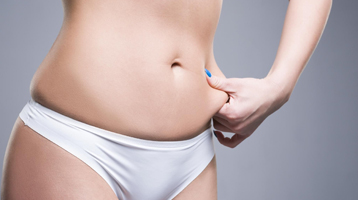
Silhouette Surgery

Obesity Surgery
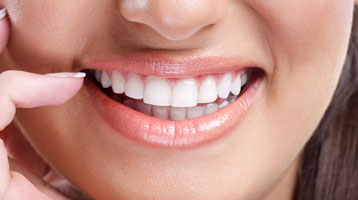
Dental Surgery
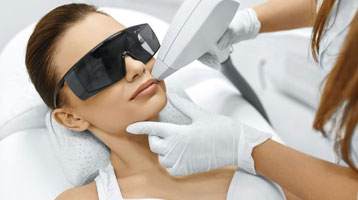
Aesthetic care

IVF & MAP

Male surgery
